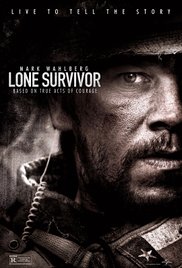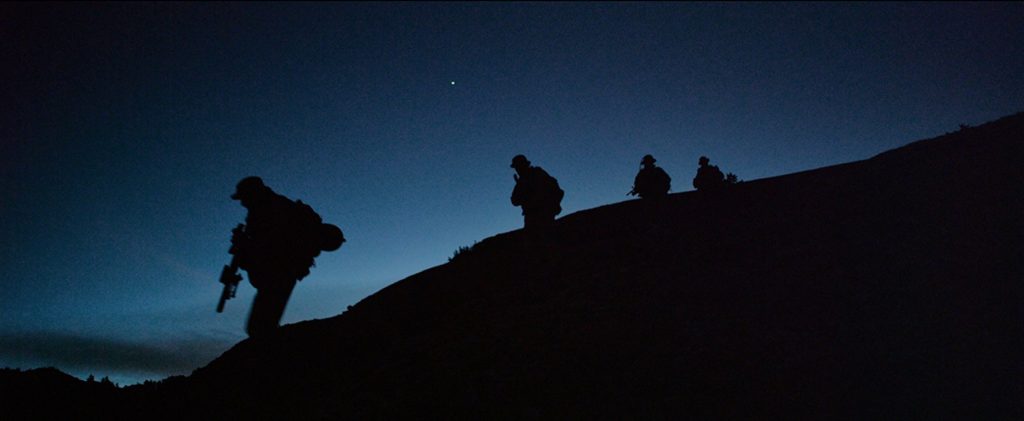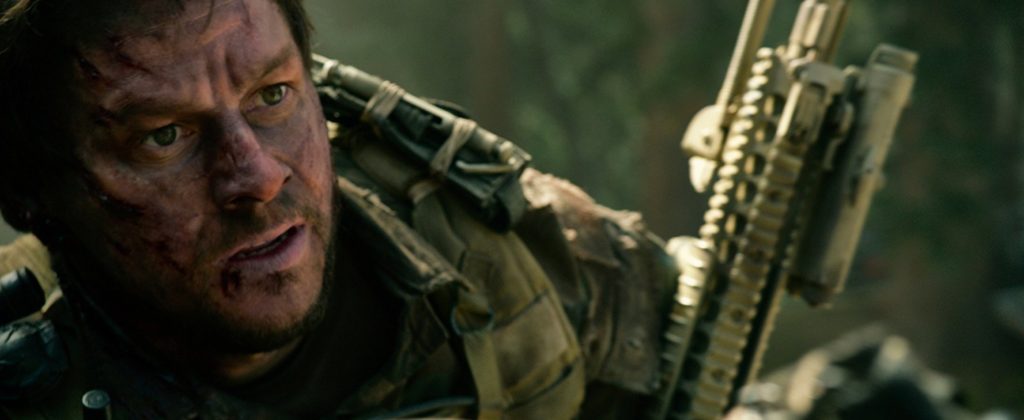Mark Wahlberg Takes a Beating in Harrowing True-Life Military Tale
DIRECTED BY PETER BERG/2013
 Director Peter Berg has his longtime followers whom will always be willing to give him the benefit of the doubt. But to many, he’ll always be the guy who directed Battleship. That film was such a monumental misfire and subsequent flop, I swear you could almost hear then-hot leading man Taylor Kitsch yelling at him, “You sunk my film career!!!”
Director Peter Berg has his longtime followers whom will always be willing to give him the benefit of the doubt. But to many, he’ll always be the guy who directed Battleship. That film was such a monumental misfire and subsequent flop, I swear you could almost hear then-hot leading man Taylor Kitsch yelling at him, “You sunk my film career!!!”
Now, Berg attempts the obligatory dignified bounce back with Lone Survivor, another military actioner, but this one the polar tonal polar opposite of his notorious alien invasion/inspired-by-a-board-game film. Lone Survivor is brutally, terribly real. Perhaps overcompensatingly so. It’s the kind of comeback model attempted by Joel Schumacher, going from the infamously overblown and disposable Batman & Robin to the small gritty war film Tigerland. It didn’t quite work for Schumacher, who’s career never was the same after his “toyetic” mega-film. How well it works for Berg remains to be seen, but this much is assured: Lone Survivor is no hollow soldier story.
Based upon the book by Marcus Luttrell (played by Mark Wahlberg), the film is essentially the final day in the life of a U.S. Navy SEALS unit in Afghanistan, detailing a mission that goes horribly, horribly wrong. Per the title, not everyone is killed in the doomed Operation Red Wing (an anti-Taliban strike set upon an incredibly steep embankment of trees and large jagged rocks), although the film’s detailing of the body-count and intensity of it all does evoke Ridley Scott’s 2001 modern warfare nail-biter, Black Hawk Down (the last great film Scott has made). Both films focus on military procedure over individual characters, resulting in a less personal, more unit-driven narrative that feels like this kind of combat. (Considerably less pressingly, both films feature Eric Bana in supporting roles.) Berg follows Scott’s lead in allowing the chaos and bloodshed to gobble up individual identities, with almost all troops becoming indistinguishable one from another. Traits and elements of civilian life half a world away, so carefully established in Act I, become perfunctory reminders of the common humanity so recklessly damaged and lost later on.

Clearly, Berg has set out to honor the real-life men who took part in Operation Red Wing. The film ends with a prolonged slide show of image after image of the SEALS, in uniform and in civilian life. Its the latter aspect that’s particularly emotional, as audiences are confronted with the reality of real honest to goodness loved ones that are left behind. It’s particularly sad then, that those loved ones will probably want to steer clear of Lone Survivor, as it’s depictions of what these guys go through and the graphic fates of many of them would understandably prove too emotionally harrowing.
The prosthetic and gore effects are by Greg Nicotero and Howard Berger, those veterans of splattery zombie horror a hundred times over. Their trademark viscera and carnage is not spared in this reality-based tale, quickly inducing Berg’s sustained fastidious moral exhaustion. Characters are shot through, bloodied, beaten, impaled, pummeled and subjected to long painful tumbles down the worst kind of terrain. And again and again, it’s institutional bureaucracy that hurries along their fates; the men are repeatedly hung up and done in via policy dictating little wiggle room beyond the parameters of a “gentleman’s war” against foes whom wield no concept or regard for such a thing. The troops are ultimately honored by the film, even as the establishment they adhere to, and its broader mission, is questionably not. How the real life men and their families would feel about that, I can only guess.
Lone Survivor is the kind of film that leaves a wearying mark. As individual identities are gobbled up by chaos and carnage, a strange phenomenon of drifting attention begins to set in. If your mind wanders as a SEAL pokes his head around a treacherous corner for the umpteenth time, know that it won’t be long before more terrible blood is spilled, and yet another death felt in your gut.

Mark Wahlberg in LONE SURVIVOR.
The most successful and interesting portion of Lone Survivor, however, may be the one most overlooked: The nearly half-hour briefing, mobilizing and sneaking-into-place sequence – the final portion before the film takes a turn for the worse, never to return. We’re still getting to know the guys (played with utter commitment by Wahlberg, Emile Hirsch, Ben Foster, and Berg’s Battleship star Taylor Kitsch, giving it another go), tensely observing their taut movements and steely determination amid coded walkie chatter and hand signals. It’s no Zero Dark Thirty finale, but it deploys the proper admiration, commitment, detail, and humanity in the final minutes before things truly do become sunk.
Lone Survivor, a late-arriving 2013 entry, may not be the kind of dignified bounce-back that it’s perhaps intended to be, but it’s enough to contextualize Battleship, and even Hancock as the game-breaks that they were. It’s value is certainly deeper than it’s director’s filmography. And for Peter Berg’s fans, that should be enough to recast him as a special force in cinema all over again.

